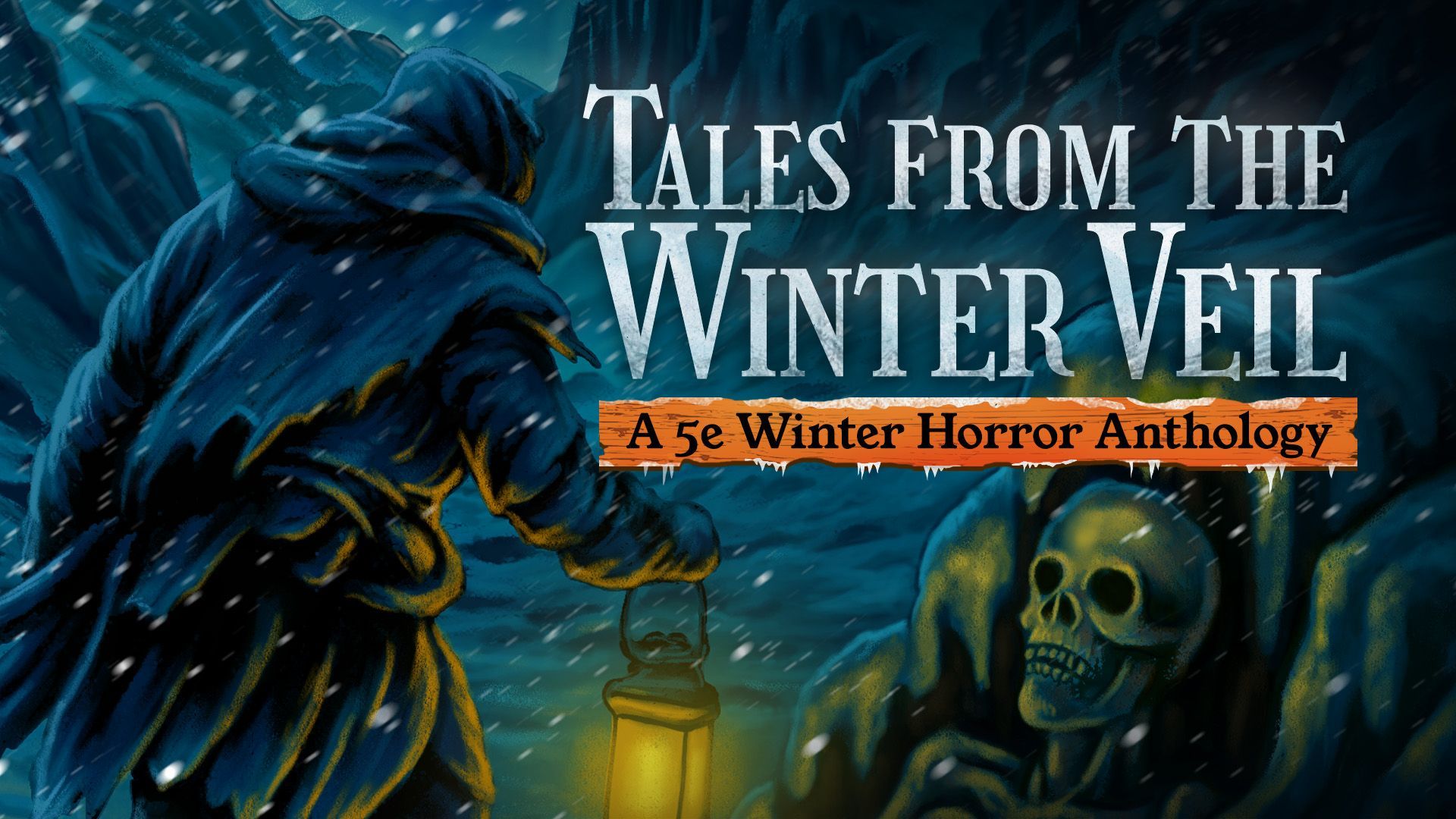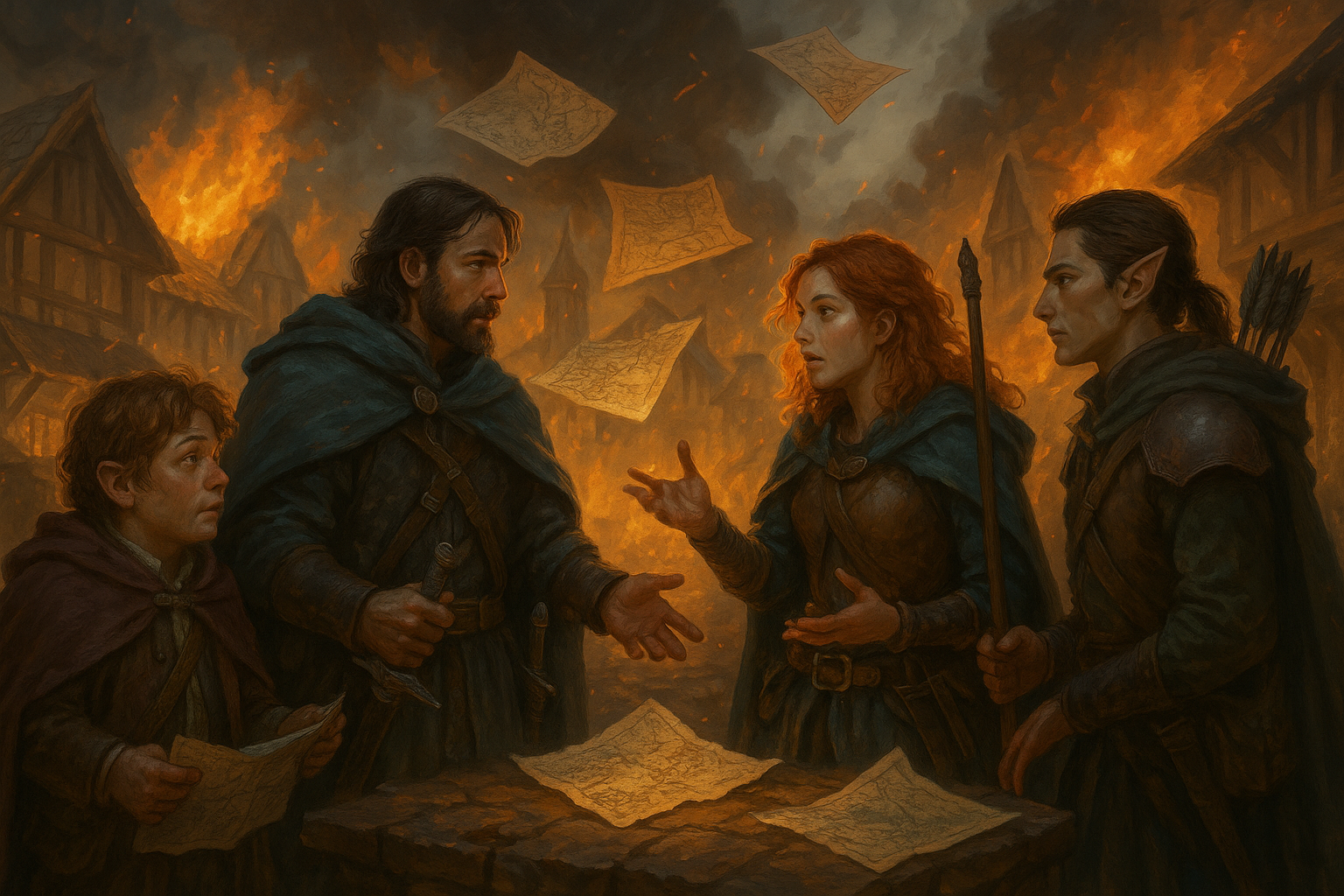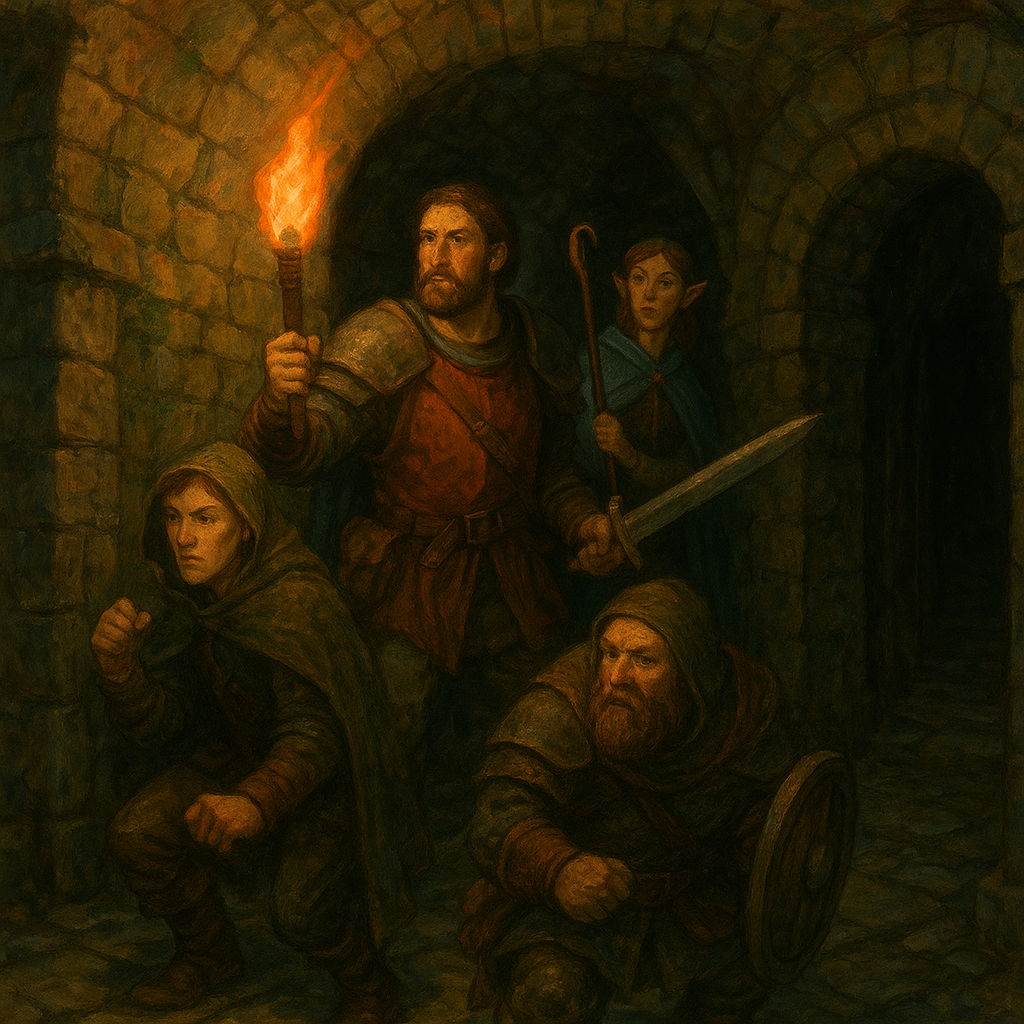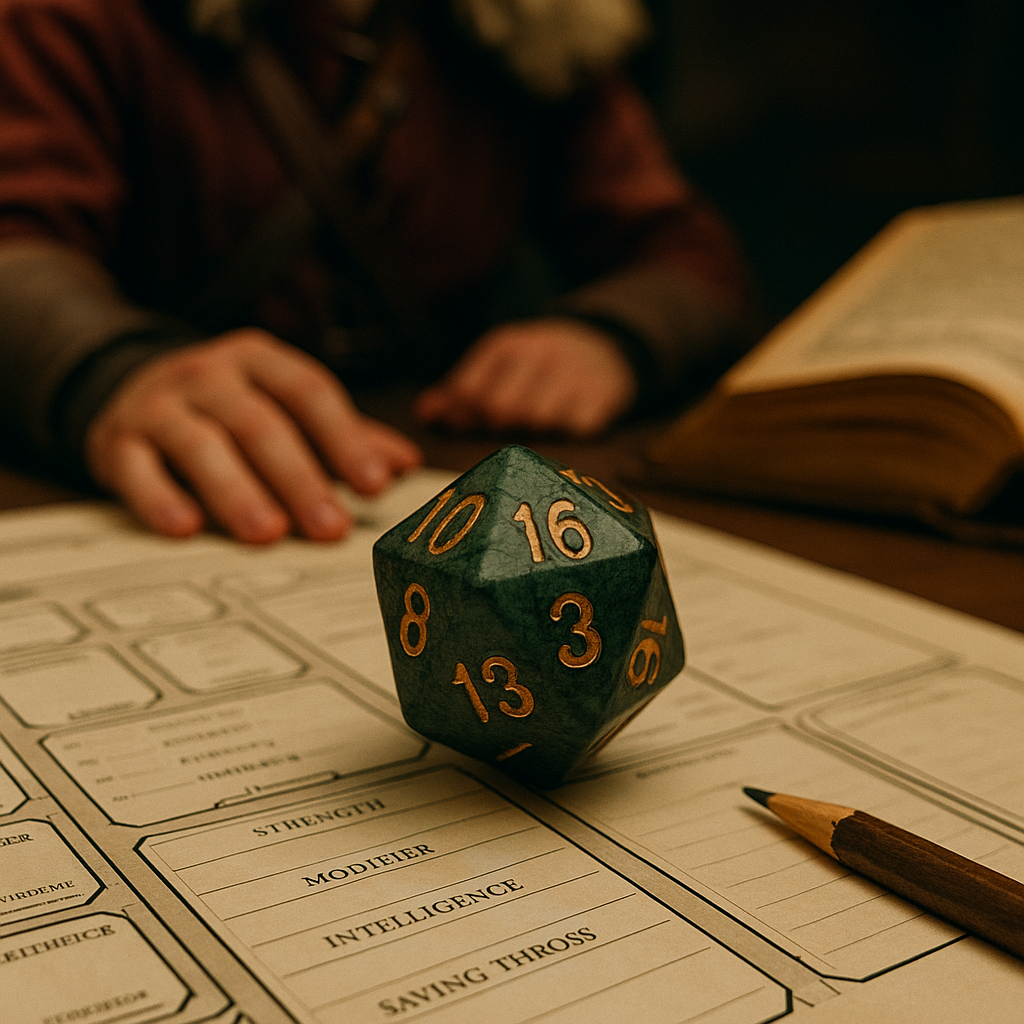Mindscapes and Dreamscapes: Designing One-Shot Adventures in the Subconscious
D&D Inception - But making it make sense

Dear Readers,
In the shadowy corners of the mortal mind lie vast, uncharted landscapes of the subconscious: ethereal planes, imagined horrors, impossible dreams, and twisted reflections of the waking world. These realms—dreamscapes and mindscapes—are ripe for one-shot adventures that bend logic, shift reality, and unearth the raw essence of your players' characters.
Today we dive into the arcane art of designing one-shot adventures set within the mind. Whether induced by magical sleep, psychic invasion, divine vision, or traumatic collapse, mind-based adventures let you break all the rules—and create powerful, surreal narratives that linger long after players awaken.
1. Why Dream Adventures Work
Dream adventures give your campaign something rare: pure creative freedom. Within a dream, the laws of physics, time, and magic are mutable. Characters face symbolic trials instead of linear plot beats. Players are forced to engage with not just "what their characters can do," but "who they really are."
Benefits of subconscious settings:
- Explore deep character backstories or trauma
- Break genre norms without breaking immersion
- Allow surreal puzzles and impossible environments
- Introduce philosophical or emotional challenges
- Create unforgettable visual, sensory, and thematic moments
Whether you're running high-fantasy epics or grim horror tales, a detour into the mind lets players touch something deeper.
2. Narrative Justifications for Mind-Based Quests
You can't have a dream adventure without a compelling in-world reason. Here are some ideas:
Magical Causes:
- Cursed item traps characters in a shared hallucination
- Arcane ritual sends party into a sleeping god's dream
- Mind flayer's psychic attack shatters mental reality
- Plane shift mishap lands characters in the Dreaming
Emotional/Spiritual Causes:
- Cleric receives a divine vision calling them inward
- Bard relives a performance gone wrong in a looping nightmare
- Warlock explores their patron's subconscious lair
- Characters must understand a possessed ally's mind to save them
Plot-Based Causes:
- Villain hides vital intel within a fractured memory
- A coma-stricken NPC holds the secret to stopping a plague
- The party is trapped in a dream-engineered prison by fey
The best dream one-shots arise when the reason for the dream ties directly into a PC’s arc or a larger campaign mystery.
3. Structural Variants: Dreams vs. Delusions
Not all mental adventures are created equal. Consider the tone and framing:
A. Surreal Dream
The classic approach: strange physics, non-linear logic, emotionally driven scenes. Time stretches or loops. Doors float. The sun weeps.
Examples:
- Party chases a memory through shifting rooms
- A childhood home becomes a battlefield
B. Nightmare Horror
Play on fear and tension. Characters relive mistakes. The environment responds to their anxieties.
Examples:
- Characters constantly hear whispers of doubt
- They watch versions of themselves perform terrible acts
C. Psychic Puzzle
Mindscapes can be logical as well: a cerebral dungeon crawl through metaphors and intellect.
Examples:
- Solve a riddle to unlock a locked memory
- Rearrange dream-rooms in correct emotional order
D. False Reality
Characters don't initially realize they're dreaming. The world seems normal—until it doesn’t.
Examples:
- NPCs speak nonsense when questioned too deeply
- Time resets upon character death, but memories linger
4. Designing Dream-Like Environments
Use your world-building skills to create settings that surprise and unsettle:
Environmental Ideas:
- A city floating upside-down
- A forest where trees whisper names of lost friends
- A library where books bleed ink when opened
- A battlefield where all enemies wear the PCs’ faces
Mix surreal beauty and horror. Juxtapose things that should never coexist. Let characters defy gravity, walk on water, or speak to the moon.
Tip: Change environments frequently. A hallway may lead from a childhood bedroom into a void, then into a cathedral made of feathers. Shift logic subtly—until it cracks.
5. Mechanics in the Subconscious
Dream adventures allow you to mess with standard rules—but only if you do so intentionally.
Common Adjustments:
- No spell slots, but casting causes exhaustion
- Each success builds "Lucidity"; failures add "Distortion"
- HP is temporary; death doesn't end the dream but alters it
- Skills unlock new dream rooms (e.g., Persuasion opens a memory, Arcana stabilizes the sky)
Lucidity Mechanic (Optional): Track how "in control" the characters are.
- Lucidity starts at 0.
- Gain 1 for each critical success, loss, or moment of clarity.
- At 5 Lucidity, the player may reshape the dream once (rearrange terrain, revive ally, change outcome).
This lets players feel immersed while also giving agency.
6. NPCs as Symbols and Secrets
Dream NPCs are more than exposition devices—they are manifestations of fears, memories, desires, and truths.
Types of Dream NPCs:
- Faceless Figures: Represent forgotten trauma or secrets
- Talking Animals: Instinct or emotion given voice
- Past Loved Ones: Comfort or guilt made real
- Villainous Doubles: The worst aspects of the PC
How to Use Them:
- Ask your players in secret for a past regret or recurring dream
- Build dream-NPCs based on that input
- Use distorted versions of real campaign NPCs
- Let NPCs speak in cryptic rhyme, metaphor, or mirror dialogue
These interactions ground the surreal in personal stakes.
7. Encounter Design: Logic vs. Emotion
Combat in a dream should mean something. Avoid generic monsters. Instead, design emotional or thematic enemies.
Examples:
- A cloaked figure that only attacks when ignored
- A "Shame Elemental" that grows stronger with each failed saving throw
- A horde of mocking faces that can only be banished with truth
Consider unconventional win conditions:
- Calm the beast rather than kill it
- Solve its riddle
- Relive a memory correctly
- Make peace with it
Don’t fear ambiguity. Let players experiment. Reward symbolic or emotional solutions.
8. Meaningful Choices in an Unreal World
To keep dreams from becoming railroads, offer consequences that matter emotionally even if not mechanically.
Choices Might Include:
- Accepting a dark truth to proceed
- Abandoning a false comfort (e.g., "Your family is alive here")
- Letting an NPC remain in the dream
- Choosing which ally's mind to stabilize first
Frame dilemmas around identity, memory, and guilt. Use shifting dream logic to present scenarios they never would face in the waking world.
Example: Let the bard play a concert before a crowd of all the lives they failed to save. Let the rogue choose whether to open a locked door behind which their real family waits—or does it?
9. Ending the Dream: Rewards and Consequences
A good one-shot must end with impact. Dream adventures benefit from ambiguous closure or revelatory finales.
Ways to End:
- Players "wake up," but something has changed (e.g., a new scar, a memory, a missing item)
- The dream revealed a prophecy or clue
- The person they tried to save either wakes—or flatlines
- They brought something back with them
Dream Rewards:
- +1 to a saving throw for facing a fear
- Custom trinkets imbued with symbolism (e.g., a key to nowhere)
- Fragments of knowledge or magic
- Advantage on Insight or Wisdom checks for a while
Let the ending resonate. Even if it doesn’t affect the "real" world much, the emotional impact should linger.
10. Sample One-Shot Outline: "The Waking Key"
Premise: A member of the party (or a beloved NPC) has fallen into a magical coma after touching a cursed relic known as the Waking Key. The party must enter their mindscape to retrieve them.
Act 1: Descent
- Characters cast a ritual or drink a potion to enter the mind
- Arrive in a surreal landscape (a garden of glass trees, where rain falls upward)
- Meet a guide who is a twisted version of the comatose character
Act 2: Fractured Realities
- Explore dream zones representing different memories or fears:
- A battlefield filled with dolls
- A library where books erase your memories as you read them
- A flooded village beneath a red sky
- Face symbolic encounters:
- A judge who demands they justify their past sins
- A monster that feeds on indecision
Act 3: The Core Memory
- Reach the heart of the dream: a cathedral of mirrors
- Inside: the real version of the dreamer, chained by "truth"
- Players must speak words of forgiveness, accept guilt, or abandon illusions
Ending Options:
- The dreamer wakes, changed
- The relic shatters, releasing or imprisoning a soul
- Each PC gains a new flaw or insight
Dear Readers, dream adventures are not about strict mechanics or dungeon symmetry. They are about truth and unreliability, fear and hope, what we choose to forget and what we dare to remember. They challenge players to roleplay with soul instead of sword.
So next time your campaign needs a palette cleanser, a climax, or a character arc deep-dive, close your eyes... and walk through the mind.
Until next time, Dear Readers...






















